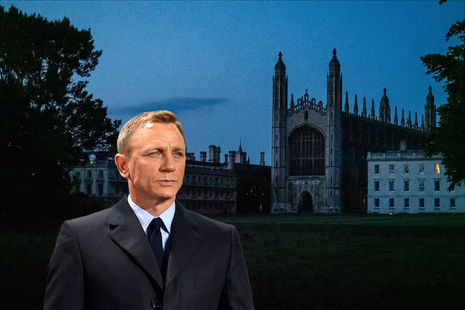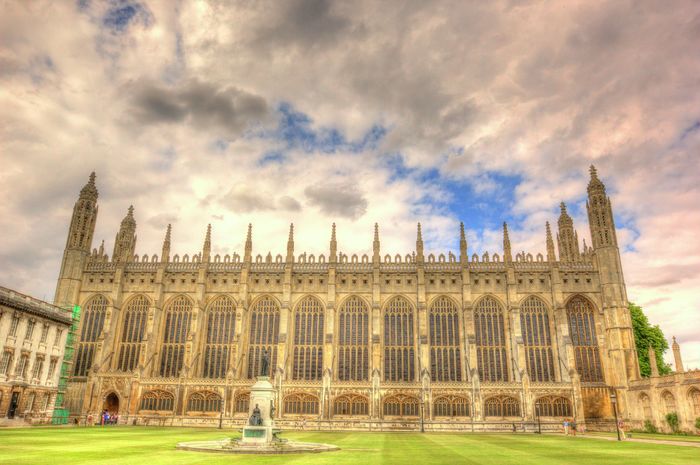The untold tale of Cambridge’s history of espionage
Aanchal Kapur dives into the lost archives unveiling Cambridge’s strong historical ties to spying

In the revered halls of Cambridge University, where centuries of intellectual pursuits echo among ancient spires, a compelling narrative emerges – one that uncovers the University's entanglement in the covert intrigues of espionage and the Cold War. This clandestine tale, revealed through declassified documents and confidential materials, unveils Cambridge's unexpected and enigmatic involvement in global intelligence operations.
During the Tudor period, Cambridge played a pivotal role in shaping Britain's emergence as a global intelligence leader. Notable figures such as Sir Francis Walsingham, a Cambridge-educated spymaster, established formidable intelligence networks instrumental in thwarting threats against Queen Elizabeth I, including the Babington Plot, which was a conspiracy in 1586 to assassinate the monarch.
Transitioning into the 20th century, Cambridge continued to produce influential figures in British intelligence, exemplified by Sir Stewart Menzies, head of MI6 during World War II and the early Cold War era.
"Cambridge produced influential figures in British intelligence"
However, Cambridge's influence on intelligence took a complex turn in the mid-twentieth century. In 1945, the university had unexpectedly emerged as a hotbed for intelligence recruitment, producing spies for both the Western allies and the Soviet Union. Among the infamous recruits were the notorious Cambridge Five – British agents enlisted by Soviet intelligence. What's striking is that these agents, including Trinity College alumni, were also members of the Apostles, Cambridge University's secret society. This dual affiliation underscores the intricate interplay between academia and espionage within Cambridge, and highlights the significant role played by the University's secret societies.
Originally motivated by a sense of duty to counter fascism, the infamous five eventually veered into clandestine activities, which included sharing sensitive information with the Soviet Union. Their actions involved transmitting classified data to the KGB, defecting to Moscow, and significantly undermining the effectiveness of British and American intelligence efforts.
The furor erupted when Burgess and Maclean defected in 1951, followed by Philby's revelation as a double agent, severely undermining trust in the British intelligence establishment and raising questions about the nexus between academia and espionage within Cambridge, epitomised by figures like Anthony Blunt. While a fellow of Trinity College in the 1930s, Blunt engaged in espionage activities as part of a circle led by Guy Burgess. This included transferring classified intelligence to the KGB, providing warnings to fellow agents about counter-intelligence operations that could endanger them, and arranging the escape of fellow spies Guy Burgess and Donald Maclean from Britain in 1951.
"Transferring classified intelligence to the KGB, warning fellow agents about counter-intelligence operations, and arranging the escape of fellow spies"
Beyond the exploits of the Cambridge Five, figures like Christopher Marlowe, a playwright of the Elizabethan era, are associated with possible involvement in espionage, sparking scholarly debate. Despite a lack of concrete evidence, theories suggest he may have been a covert operative for Queen Elizabeth I's government. His lavish spending at Cambridge University, coupled with prolonged absences and commendations from the Privy Council, raise suspicions of clandestine activities. Marlowe's involvement reflects the early establishment of a Secret Service under Queen Elizabeth I, led by figures like Sir Francis Walsingham. However, his fate serves as a reminder of the inherent distrust within espionage circles, as seen in his tragic death at the hands of fellow agents.
The legacy of John Dee further adds to Cambridge's intrigue. Born in 1527 and educated at St John’s College before becoming one of Trinity College’s founding fellows, Dee's expertise in science and mathematics led Queen Elizabeth I to appoint him as her scientific and astrological advisor. His mysterious signature symbol, featuring two circles and an elongated number 7, has led some to speculate that he inspired James Bond's famous three-digit code number: 007. While some suggest Dee's involvement in espionage remains a subject of debate among scholars, his contributions to maritime defence and mystical pursuits further entrench his legacy as a revered intellectual at Cambridge University, embodying the intrigue of an Elizabethan man of mystery.
Amid these historical revelations, in 2010, Cambridge University Library hosted an exhibition titled "Under Covers: Documenting Spies". The exhibition unveiled a captivating exploration of the clandestine realm of espionage, spanning from ancient times to the height of the Cold War. Utilizing a rich array of recently declassified documents and 'top secret' material from its own archives, this exhibition shed light on the elusive world of spies and their covert operations. Exhibits ranged from medieval manuscripts recounting tales of royal espionage to modern-day artefacts such as a Soviet-era map of East Anglia.
"The pursuit of knowledge here extends beyond scholarly debates to covert operations"
Notably, the inclusion of artefacts related to the infamous Cambridge Five, including student record cards for Anthony Blunt, Guy Burgess, Donald Maclean, Kim Philby and John Cairncross, and a 1933 copy of The Granta magazine with a mock interview with Donald Maclean. This highlighted Cambridge's role as a hub for intelligence activities.
In 2016, contemporary espionage concerns added a new layer to Cambridge's narrative. Intelligence experts, including former MI6 head Sir Richard Dearlove, resigned from the Cambridge Intelligence Seminar (CIS) amid fears of Russian influence. The CIS, a distinguished forum for spy craft researchers, stood at the centre of suspicions, with concerns that Veruscript, a digital publishing house funding the seminar, might be a front for Russian intelligence services. The publisher rejected the possible Russian intelligence link.
Now, in 2024, we are compelled to reflect on the delicate balance between academia and covert influences at Cambridge. This reminder underscores that the pursuit of knowledge here extends beyond scholarly debates to covert operations, shadowing the institution's legacy. The ongoing narrative prompts reflections on the interplay between academic pursuits and the covert world, adding new chapters to Cambridge's history of espionage from Tudor spies to modern intrigue.
 News / Proposed changes to Cambridge exam resits remain stricter than most7 May 2024
News / Proposed changes to Cambridge exam resits remain stricter than most7 May 2024 News / Cambridge students set up encampment calling for Israel divestment6 May 2024
News / Cambridge students set up encampment calling for Israel divestment6 May 2024 Features / Cambridge punters: historians, entertainers or artistes? 7 May 2024
Features / Cambridge punters: historians, entertainers or artistes? 7 May 2024 Sport / The ‘netball girl’: myth or reality?7 May 2024
Sport / The ‘netball girl’: myth or reality?7 May 2024 Theatre / A nuanced and neurodivergent Carrie comes to the ADC6 May 2024
Theatre / A nuanced and neurodivergent Carrie comes to the ADC6 May 2024






